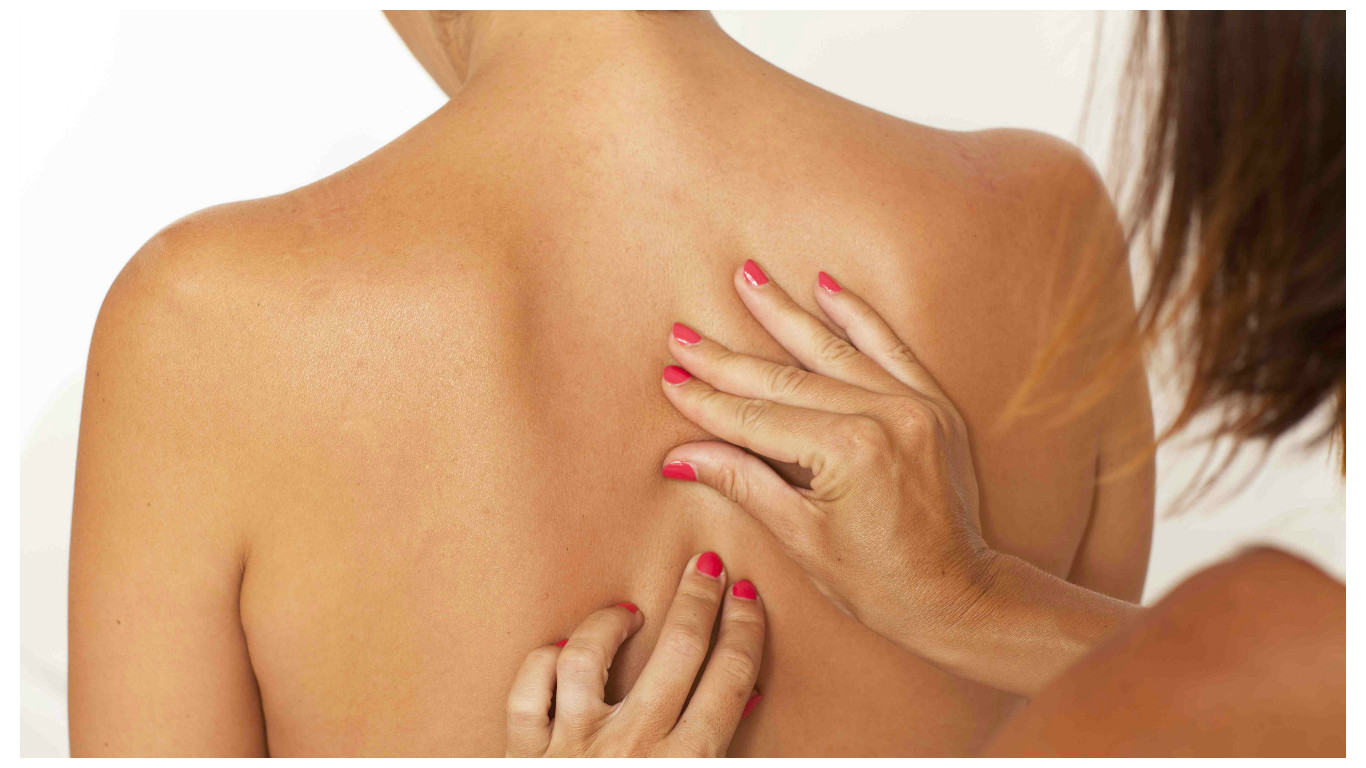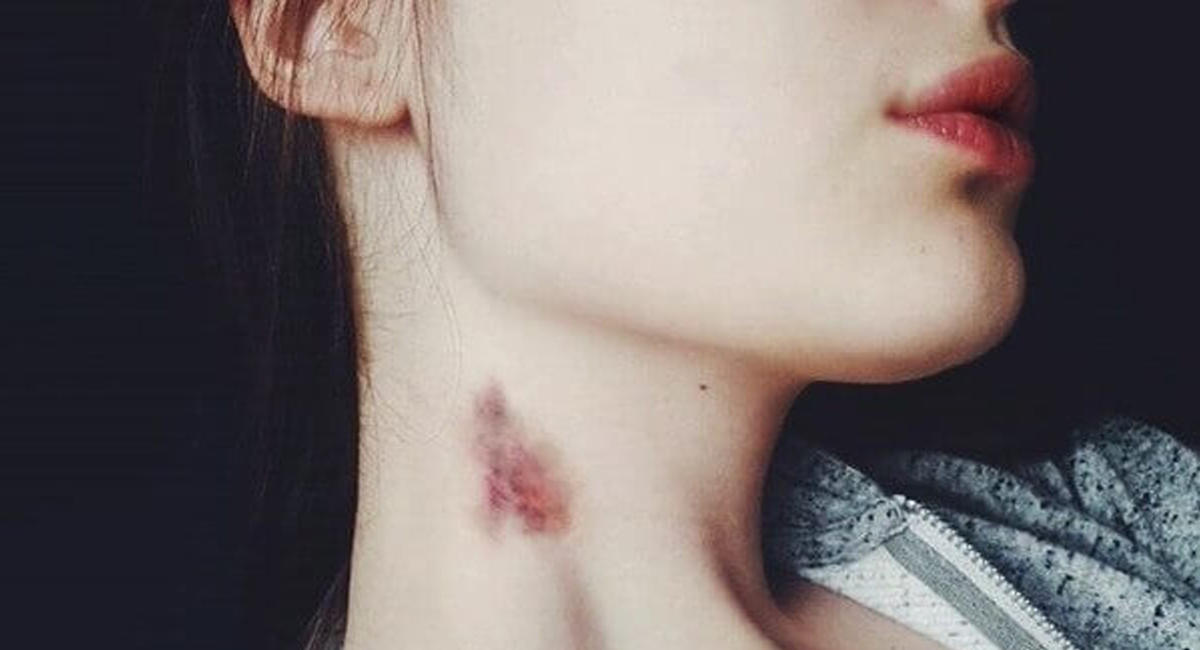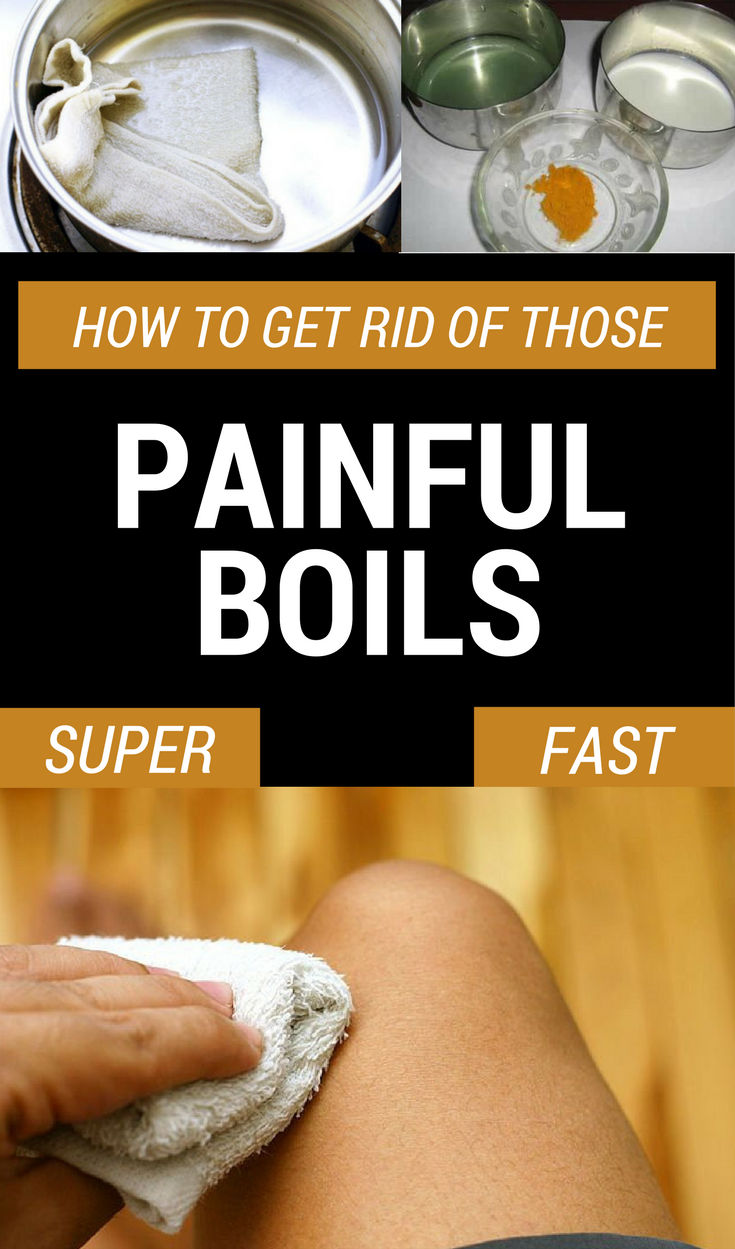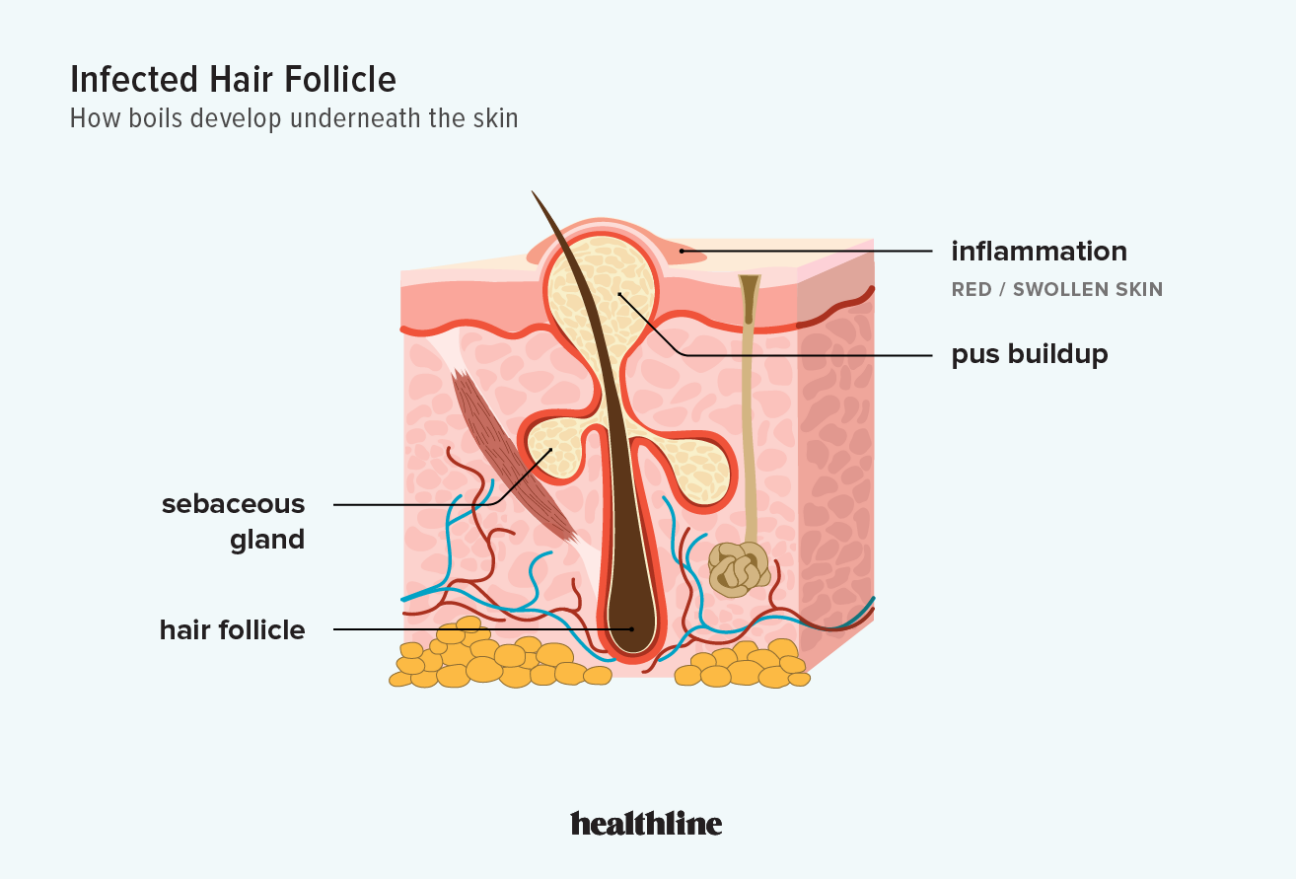What causes boils on your neck. Boils on Neck: Causes, Symptoms, and Effective Treatment Options
What causes boils on the neck. How can you identify a boil. What are the best ways to treat boils at home. When should you see a doctor for boils. How can you prevent boils from recurring.
Understanding Boils: What They Are and How They Form
Boils, also known as furuncles, are painful, pus-filled lumps that develop under the skin. They typically form when bacteria infect a hair follicle or oil gland. The most common culprit is Staphylococcus aureus, a type of bacteria that naturally resides on the skin.
The infection causes the affected area to become inflamed, red, and tender. As white blood cells rush to fight the infection, pus accumulates, causing the boil to grow larger and more painful. Eventually, the boil may come to a head and rupture, draining the pus.
How do boils differ from other skin conditions?
Boils can sometimes be confused with other skin conditions, but they have distinct characteristics:
- Acne: While both involve inflammation of hair follicles, acne typically doesn’t contain the same amount of pus as boils and is usually smaller.
- Cysts: These are usually slower-growing and less painful than boils. They also don’t typically contain pus.
- Carbuncles: These are essentially clusters of boils that have formed together, creating a larger, more severe infection.

Common Causes and Risk Factors for Neck Boils
While anyone can develop boils, certain factors can increase your risk, especially for boils on the neck:
- Poor hygiene: Inadequate cleansing can allow bacteria to thrive on the skin.
- Friction or irritation: Tight collars or frequent shaving can irritate the skin, making it more susceptible to infection.
- Compromised immune system: Conditions like diabetes, HIV, or cancer can weaken the body’s ability to fight off infections.
- Obesity: Excess skin folds can create warm, moist environments where bacteria flourish.
- Hormonal changes: Fluctuations during puberty, menstruation, or pregnancy can affect skin health.
- Certain skin conditions: Eczema or other conditions that compromise skin integrity can increase vulnerability to infections.
Are certain individuals more prone to developing boils?
Yes, some people are more susceptible to boils than others. Men, particularly those in their middle years, tend to develop boils more frequently. Individuals with chronic health conditions, such as diabetes or immune disorders, also face a higher risk. Additionally, people who have had boils in the past are more likely to experience recurrences.

Identifying Boils: Symptoms and Stages of Development
Recognizing a boil in its early stages can help you take prompt action. The typical progression of a boil includes:
- Initial stage: A small, red, tender bump appears on the skin.
- Growth phase: The bump grows larger, becomes more painful, and fills with pus.
- Maturation: The boil comes to a head, often with a yellow or white tip.
- Drainage: The boil may rupture and drain on its own or require medical intervention.
- Healing: After draining, the area gradually heals, though it may leave a scar.
What distinguishes a simple boil from a more serious carbuncle?
While boils are typically single lesions, carbuncles are more extensive infections consisting of multiple boils clustered together. Carbuncles are larger, deeper, and often accompanied by more severe symptoms such as fever and fatigue. They’re more common in men and often appear on the back of the neck or thighs. Carbuncles generally require medical attention due to their increased risk of complications.

Home Remedies and Self-Care for Boils
Many boils can be treated effectively at home with proper care. Here are some recommended self-care measures:
- Apply warm compresses: Hold a clean, warm, damp cloth against the boil for 10-15 minutes, several times a day. This helps draw the pus to the surface and encourage drainage.
- Maintain cleanliness: Gently wash the area with antibacterial soap and keep it clean and dry.
- Use over-the-counter pain relievers: Ibuprofen or acetaminophen can help manage pain and reduce inflammation.
- Avoid squeezing or popping: This can spread the infection and lead to complications.
- Cover the area: Once the boil has drained, cover it with a sterile bandage to prevent further infection.
Can natural remedies help in treating boils?
While scientific evidence is limited, some people find relief with natural remedies. These may include:
- Tea tree oil: Known for its antibacterial properties, it may help fight the infection when diluted and applied topically.
- Turmeric paste: Its anti-inflammatory properties might help reduce swelling and pain.
- Epsom salt soak: This can help draw out the infection and provide relief.
However, it’s important to note that these remedies should not replace proper medical care, especially for severe or recurring boils.

When to Seek Medical Attention for Boils
While many boils resolve on their own or with home treatment, certain situations warrant professional medical care:
- The boil is on your face or spine
- The boil is larger than 2 inches in diameter
- You have multiple boils (carbuncle)
- The boil hasn’t improved after a week of home treatment
- You’re experiencing fever, chills, or other systemic symptoms
- You have a weakened immune system or chronic health condition
- The boil is extremely painful or interfering with daily activities
What treatments might a healthcare provider recommend?
Depending on the severity of the boil, a healthcare provider may suggest:
- Incision and drainage: For large or stubborn boils, a small incision may be made to drain the pus.
- Antibiotics: Oral or topical antibiotics may be prescribed, especially if the infection is severe or spreading.
- Culture and sensitivity testing: To identify the specific bacteria causing the infection and determine the most effective antibiotic.
- Further testing: If boils are recurrent, tests may be done to check for underlying conditions like diabetes.

Preventing Boils: Strategies for Reducing Recurrence
While it’s not always possible to prevent boils entirely, several strategies can help reduce your risk:
- Practice good hygiene: Wash your hands regularly and keep your skin clean and dry.
- Avoid sharing personal items: This includes towels, razors, and clothing.
- Manage underlying conditions: Keep chronic health conditions like diabetes well-controlled.
- Boost your immune system: Maintain a healthy diet, exercise regularly, and get adequate sleep.
- Avoid tight clothing: Loose-fitting clothes can help prevent skin irritation and trapped sweat.
- Treat skin conditions: Properly manage conditions like eczema that can compromise skin integrity.
Can dietary changes help prevent boils?
While there’s no specific diet proven to prevent boils, a balanced diet rich in vitamins and minerals can support overall skin health and immune function. Some potentially beneficial nutrients include:
- Vitamin C: Supports immune function and collagen production
- Vitamin E: Acts as an antioxidant and supports skin health
- Zinc: Plays a role in wound healing and immune function
- Omega-3 fatty acids: May help reduce inflammation
Additionally, staying well-hydrated can help maintain healthy skin and support your body’s natural defense mechanisms.

Understanding the Link Between Boils and Other Health Conditions
Recurrent boils may sometimes be a sign of an underlying health issue. Conditions that can increase susceptibility to boils include:
- Diabetes: High blood sugar levels can impair immune function and wound healing.
- Immune disorders: Conditions that weaken the immune system make it harder for the body to fight off infections.
- Hormonal imbalances: Fluctuations in hormones can affect skin health and susceptibility to infections.
- Nutritional deficiencies: Lack of certain vitamins and minerals can impact skin health and immune function.
- Chronic skin conditions: Conditions like hidradenitis suppurativa can cause recurring boil-like lesions.
How do healthcare providers diagnose underlying conditions related to recurrent boils?
If you’re experiencing frequent boils, your healthcare provider may recommend:
- Blood tests: To check for diabetes, immune disorders, or nutritional deficiencies
- Skin cultures: To identify any unusual or resistant bacteria
- Imaging studies: In some cases, to rule out deeper infections or abscesses
- Referral to a specialist: Such as an endocrinologist or dermatologist, depending on suspected underlying causes
Identifying and treating any underlying conditions is crucial for managing recurrent boils effectively.

The Psychological Impact of Recurrent Boils
While often viewed primarily as a physical condition, recurrent boils can have significant psychological effects. These may include:
- Embarrassment or self-consciousness, especially if boils occur in visible areas
- Anxiety about potential recurrences
- Depression related to chronic pain or limitations in activities
- Social withdrawal due to concerns about appearance or odor from draining boils
- Stress, which can potentially exacerbate the condition
How can individuals cope with the emotional impact of recurrent boils?
Dealing with the psychological effects of recurrent boils is an important aspect of overall management. Strategies that may help include:
- Seeking support from friends, family, or support groups
- Practicing stress-reduction techniques like meditation or yoga
- Consulting a mental health professional if feelings of anxiety or depression persist
- Focusing on overall health and wellness to boost confidence and resilience
- Educating oneself about the condition to feel more in control
Remember, while boils can be challenging to deal with, they are a manageable condition with proper care and support.

Boils – NHS
A boil is a hard and painful lump that fills with pus. Most boils go away on their own. See a GP if you keep getting them.
Check if you have a boil
A boil often starts as an itchy or tender spot.
Credit:
DR HAROUT TANIELIAN / SCIENCE PHOTO LIBRARY https://www.sciencephoto.com/media/82921/view
Boils can sometimes leak pus.
Credit:
DR P. MARAZZI/SCIENCE PHOTO LIBRARY https://www.sciencephoto.com/media/251716/view
Boils can appear anywhere on your body.
Credit:
SCIENCE PHOTO LIBRARY https://www.sciencephoto.com/media/251674/view
When lots of boils form together it’s called a carbuncle.
Credit:
Mediscan / Alamy Stock Photo https://www.alamy.com/stock-photo-a-photograph-of-a-male-with-an-abscess-in-the-neck-11763483. html?pv=1&stamp=2&imageid=508EEC20-D4AC-45FD-858D-4AEDFE40568A&p=17774&n=0&orientation=0&pn=1&searchtype=0&IsFromSearch=1&srch=foo%3dbar%26st%3d0%26pn%3d1%26ps%3d100%26sortby%3d2%26resultview%3dsortbyPopular%26npgs%3d0%26qt%3dA7911G%26qt_raw%3dA7911G%26lic%3d3%26mr%3d0%26pr%3d0%26ot%3d0%26creative%3d%26ag%3d0%26hc%3d0%26pc%3d%26blackwhite%3d%26cutout%3d%26tbar%3d1%26et%3d0x000000000000000000000%26vp%3d0%26loc%3d0%26imgt%3d0%26dtfr%3d%26dtto%3d%26size%3d0xFF%26archive%3d1%26groupid%3d%26pseudoid%3d788068%26a%3d%26cdid%3d%26cdsrt%3d%26name%3d%26qn%3d%26apalib%3d%26apalic%3d%26lightbox%3d%26gname%3d%26gtype%3d%26xstx%3d0%26simid%3d%26saveQry%3d%26editorial%3d1%26nu%3d%26t%3d%26edoptin%3d%26customgeoip%3d%26cap%3d1%26cbstore%3d1%26vd%3d0%26lb%3d%26fi%3d2%26edrf%3d0%26ispremium%3d1%26flip%3d0%26pl%3d
html?pv=1&stamp=2&imageid=508EEC20-D4AC-45FD-858D-4AEDFE40568A&p=17774&n=0&orientation=0&pn=1&searchtype=0&IsFromSearch=1&srch=foo%3dbar%26st%3d0%26pn%3d1%26ps%3d100%26sortby%3d2%26resultview%3dsortbyPopular%26npgs%3d0%26qt%3dA7911G%26qt_raw%3dA7911G%26lic%3d3%26mr%3d0%26pr%3d0%26ot%3d0%26creative%3d%26ag%3d0%26hc%3d0%26pc%3d%26blackwhite%3d%26cutout%3d%26tbar%3d1%26et%3d0x000000000000000000000%26vp%3d0%26loc%3d0%26imgt%3d0%26dtfr%3d%26dtto%3d%26size%3d0xFF%26archive%3d1%26groupid%3d%26pseudoid%3d788068%26a%3d%26cdid%3d%26cdsrt%3d%26name%3d%26qn%3d%26apalib%3d%26apalic%3d%26lightbox%3d%26gname%3d%26gtype%3d%26xstx%3d0%26simid%3d%26saveQry%3d%26editorial%3d1%26nu%3d%26t%3d%26edoptin%3d%26customgeoip%3d%26cap%3d1%26cbstore%3d1%26vd%3d0%26lb%3d%26fi%3d2%26edrf%3d0%26ispremium%3d1%26flip%3d0%26pl%3d
Things you can do to help boils
There are things you can do to treat boils yourself and stop them coming back.
Do
soak a clean cloth in warm water and hold it against the boil for 10 minutes 4 times a day
clean the area around the boil with antibacterial soap if pus comes out
cover the area with a dressing or gauze until it heals
bathe or shower every day and wash your hands regularly
take paracetamol or ibuprofen to ease the pain
wash your towels and bedding at least once a week at high temperature
try to lose weight if you are very overweight and have boils between folds of your skin
Don’t
do not pick, squeeze or pierce a boil
do not share your towel with other people until the boil has gone
do not go to a swimming pool or gym until the boil has gone – you could pass the infection on to others
Non-urgent advice: See a GP if:
- you’ve had a boil for 2 weeks and the things you’ve tried are not helping
- you keep getting boils
- you have a group of boils (carbuncle)
Urgent advice: Ask for an urgent GP appointment or get help from NHS 111 if you have a boil and:
- it is on your face
- the skin around your boil feels hot, painful and swollen
- you feel hot and shivery
- you have a weakened immune system – this could be from taking treatments such as steroids, or having a condition like diabetes
You can call 111 or get help from NHS 111 online.
Treatment for boils
A GP can check if you need treatment.
You may need:
- a small procedure to drain the boil to get rid of the pus
- antibiotics
Causes of boils
You may be more likely to get boils if you have a long-term condition that affects your immune system, such as diabetes or HIV.
You may also be more likely to get boils if:
- you’re a man
- you’ve been in close contact with someone with boils
- you have certain skin conditions, such as eczema
- you take certain medicines, such as steroids
- you’re living with obesity or malnutrition
Carbuncles are less common and mostly affect middle-aged men.
Page last reviewed: 20 June 2023
Next review due: 20 June 2026
Furuncles and carbuncles: Symptoms, causes, and treatment
A skin abscess happens when pus collects in hair follicles, skin tissues, or under the skin. A furuncle, also known as a boil, is a painful infection that forms around a hair follicle and contains pus.
A carbuncle is collection of boils that develop under the skin. When bacteria infect hair follicles, the follicles can swell and turn into boils and carbuncles.
A furuncle starts as a red lump. It may be tender. The lump rapidly fills with pus, and as it grows it may burst.
Furuncles, boils, and carbuncles typically affect the thighs, armpits, buttocks, face, and neck.
Individuals with weakened immune systems, adolescents, and young adults are more susceptible to furuncles than younger children or older adults.
Furuncles and carbuncles are similar but with some differences.
Furuncles, or boils, are skin abscesses that result from staphylococcal infection. They affect a hair follicle and surrounding tissue.
They affect a hair follicle and surrounding tissue.
Carbuncles are groups of furuncles that join together under the skin. They affect the deeper layers, and they can lead to scarring.
Furuncles and carbuncles both result in swelling under the skin, and there may be other symptoms, too.
Furuncles
Furuncles develop rapidly as pink or red bumps. They are often painful. The surrounding skin is typically red, inflamed and tender.
The lesions often appear on the neck, breast, face, buttocks, or thighs. They occur in places prone to hair, sweat, and friction, and they tend to start in a hair follicle.
The bump fills with pus within a few days, and it grows. The bigger it gets, the more painful it becomes.
Furuncles may go away without any intervention. Sometimes they burst and heal without a scar within 2 days to 3 weeks.
They are common among teenagers and young adults, and they affect males more than females. Overcrowded and unhygienic living conditions increase the risk.
Carbuncles
A carbuncle is less common than a furuncle, or boil. It is a collection of boils on one site. It is larger than a single boil, measuring up to 4 inches across. A carbuncle usually has one or more openings that drain pus onto the skin.
The most common cause of a carbuncle is a bacterium known as Staphylococcus aureus (S. aureus). The infection may lead to generalized body symptoms, including a fever of 100.4 degrees Fahrenheit or higher, and a general feeling of being unwell, weak, and exhausted.
The infection can spread to other parts of the body, and it can spread to other people too, so that other household members may develop one at the same time.
Carbuncles are most likely on the back, the thighs, or the back of the neck.
They affect males more frequently than females, and especially older men with poor health or a weakened immune system.
Carbuncle infections tend to be deeper and more severe than those caused by furuncle. The risk of scarring is higher, and they take longer to develop and to resolve than furuncles.
The risk of scarring is higher, and they take longer to develop and to resolve than furuncles.
S. aureus, also known as staph bacteria, live on the skin and inside the nose and throat.
Usually, the body’s immune system keeps them under control, but sometimes they enter the skin through a hair follicle, or through a cut or graze in the skin.
When the skin becomes infected, the immune system responds by sending white blood cells to the affected area to destroy the bacteria. Pus is an accumulation of dead bacteria, dead white blood cells, and dead skin.
The following conditions increase the risk of developing furuncles:
- Diabetes: High levels of blood sugar, or glucose, can reduce the immune system’s ability to respond to infection.
- Medications: Some medications weaken the immune system.
- HIV and some other diseases: Certain conditions weaken the immune systems
- Skin conditions: Psoriasis, eczema, and acne increase susceptibility.

Obesity also increases the risk.
Often, the normal bacteria in a person’s nose or on their skin can lead to an abscess. Sometimes, however, the infection can spread when people share space, materials, or devices, such as clothing and whirlpool footbaths.
A number of solutions can help relieve the symptoms of skin abscesses.
Applying a warm face cloth for 10 minutes a few times a day may help speed up the healing process. Heat draws more blood, and so more whites cells, to the affected area and encourages pore dilation and release of pus.
It is important to wash the hands thoroughly after touching the site and to avoid squeezing a furuncle or carbuncle, as this increases the risk of spreading infection.
Experts say patients should not try to burst or squeeze furuncles or carbuncles. If the lesion is very painful, if it lasts for more than 2 weeks, or if there is a fever, you should see your doctor.
There is a risk of secondary infection, which is when the infection spreads to other parts of the body. Cellulitis is one type of potentially serious secondary infection that can occur.
Cellulitis is one type of potentially serious secondary infection that can occur.
When to see a doctor
A furuncle usually goes away after around 2 weeks without treatment, but if a fever accompanies the abscess, the person should seek medical help.
Patients with a chronic disease, such as diabetes or cancer, or those who are taking immunosuppressive medications, should consult their doctor if they have a carbuncle.
Ways of preventing boils and carbuncles include:
- keeping the skin clean by washing it regularly
- immediately cleansing all skin wounds, cuts, and grazes, however small
- putting a sterile bandage over any cuts to help prevent infection
Eating a healthy, well-balanced diet and getting regular physical exercise will improve your general health and your immune system, reducing the risk of developing furuncles and carbuncles.
diagnostics and treatment in the clinic LLC “VERBA MEDICAL”, Sumy
Mon.
 -Fri. 09:00 – 17:00
-Fri. 09:00 – 17:00
Sat. 09:00 – 15:00
Ave. M.Lushpy 31A
Sumy
Choose a languageRusUkr
Furuncle and furunculosis
Furuncle is an acute purulent inflammation of the hair follicle involving the surrounding tissues (sebaceous gland, adipose tissue). The cause of the formation of a boil is most often golden, and less often white staphylococcus aureus. Predisposing factors are minor mechanical injuries, clothing friction, especially on the neck, lower back, buttocks, as well as exhaustion, diabetes, obesity, constant hypothermia or overheating, and others.
There are single furuncle, recurrent single furuncle (appears in one place after a short period of time) and furunculosis (many boils occur simultaneously or one after one).
Clinical picture
First, an inflammatory infiltrate appears around the hair follicle with indistinct borders of bright red color with moderate pain. Then the infiltrate thickens, becomes more painful, and the surrounding tissues swell. On day 3-4, the boil increases to 1-3 cm in diameter, in the center of which a purulent-necrotic core with a pustule on the surface is formed, the skin over it turns red, and the temperature rises locally on palpation. Also at this time, general symptoms of intoxication join (general weakness, headaches, fever up to 37-38 ° C, etc.). With a favorable course, the lid of the pustule can open and purulent content with an admixture of blood with a necrotic core is released from the boil. Then healing occurs, the process usually lasts 8-10 days.
Then the infiltrate thickens, becomes more painful, and the surrounding tissues swell. On day 3-4, the boil increases to 1-3 cm in diameter, in the center of which a purulent-necrotic core with a pustule on the surface is formed, the skin over it turns red, and the temperature rises locally on palpation. Also at this time, general symptoms of intoxication join (general weakness, headaches, fever up to 37-38 ° C, etc.). With a favorable course, the lid of the pustule can open and purulent content with an admixture of blood with a necrotic core is released from the boil. Then healing occurs, the process usually lasts 8-10 days.
But we must remember that boils in an unfavorable course can lead to abscess formation or the formation of gangrene, lymphangitis or lymphadenitis, sepsis, infection metastasis to the liver, kidneys and other organs. Boils on the face are especially dangerous for the development of meningitis.
Important! It is impossible not only to squeeze out, but also to massage the inflammatory infiltrate of any localization, especially on the face. There is no need to self-medicate, the treatment of a boil should be entrusted to a specialist.
There is no need to self-medicate, the treatment of a boil should be entrusted to a specialist.
How to treat a boil?
Single uncomplicated boils are treated conservatively. Care is prescribed for the site of the lesion, ointment dressings, antibacterial and anti-inflammatory therapy. In some cases, injections are performed with solutions of antibiotics and anesthetics (painkillers).
When abscessing a boil, it is necessary to turn to the methods of outpatient surgery. Surgical intervention consists in opening the abscess under local anesthesia, its sanitation and subsequent drainage.
Treatment of furunculosis in the clinic of LLC “VERBA MEDICAL”
In the medical center of LLC “VERBA MEDICAL” our specialists (Solodovnik A.V. and Chumak S.A.) will select an individual treatment plan, perform the operation as sparingly, painlessly using modern anesthetics (ultracaine, longocaine and others) and radio wave surgery. There is no need for hospitalization, except in the most extreme cases.
Early treatment is the key to success! Make an appointment and you will be able to receive a full consultation and treatment on the same day.
Treatment of recurrent furunculosis in adults and children
- Advantages
- Doctors
- Contacts
- Licenses
Benefits
The latest, constantly updated equipment
Interest-free installments for all services
Online ENT consultations
Departure of an ENT doctor at home
Friendly and qualified staff
24/7 ENT help
Furunculosis – purulent-necrotic inflammation of the hair follicle and surrounding subcutaneous fat. It is formed on the hairy parts of the skin. The causative agent of infection is usually Staphylococcus aureus.
It is formed on the hairy parts of the skin. The causative agent of infection is usually Staphylococcus aureus.
Furunculosis is more common in people with weakened immune systems, teenagers and adults. Furunculosis in children and the elderly is rare. The disease affects men more than women. Unsanitary living conditions increase the risk of infection.
Boils may disappear without any treatment. Sometimes they burst on their own and heal without a trace within 2 days to 3 weeks. However, after healing, they can lead to such a complication of furunculosis as scars. If an abscess is accompanied by fever, pain, or other symptoms that affect well-being, a person should seek medical attention.
Three or more episodes within 12 months is defined as recurrent furunculosis. In this case, you should also see a doctor, even if boils tend to heal on their own.
Symptoms of furunculosis
Furuncles are red, swollen and painful nodules of various sizes. The more they become, the more painful the sensation. The surrounding skin is usually red and inflamed. The nodules quickly fill with pus and at the last stage of furunculosis can burst. If several adjacent follicles are infected, they may coalesce and form a larger knot called a carbuncle. A carbuncle is a collection of boils.
The surrounding skin is usually red and inflamed. The nodules quickly fill with pus and at the last stage of furunculosis can burst. If several adjacent follicles are infected, they may coalesce and form a larger knot called a carbuncle. A carbuncle is a collection of boils.
Fever and swollen lymph nodes are rare in furunculosis, but possible.
Boils and carbuncles commonly affect the thighs, armpits, buttocks, face and neck. They occur in areas prone to hair formation, sweat and friction.
Causes of furunculosis
Staphylococcus bacteria that cause infection live on the skin, concentrating in parts of the body where folds are present (furunculosis on the face, in particular, furunculosis of the nose and furunculosis of the lips are the most common places of manifestation of the disease). Usually the immune system keeps them under control, but in a weakened immune system, they enter the skin through a hair follicle, a cut or abrasion in the skin. Furunculosis can be provoked by a simple injury to the skin or by combing it. Boils are often the result of poor personal hygiene. When the skin becomes infected, the immune system responds by sending white blood cells to the affected area to destroy the bacteria. Pus is a collection of dead bacteria, dead white blood cells, and dead skin.
Boils are often the result of poor personal hygiene. When the skin becomes infected, the immune system responds by sending white blood cells to the affected area to destroy the bacteria. Pus is a collection of dead bacteria, dead white blood cells, and dead skin.
The following conditions increase the risk of skin furunculosis:
- Diabetes: High blood sugar or glucose levels can reduce the ability of the immune system to respond to infection.
- Medicines: Some medicines weaken the immune system.
- HIV and other diseases that affect the immune system.
- Skin diseases: psoriasis, eczema and acne.
- Being overweight also increases the risk.
Furunculosis itself is not contagious by contact, but in immunocompromised individuals, infection can sometimes spread when people share the same space or materials, such as clothing and foot spas.
How to treat furunculosis?
We note right away that the treatment of furunculosis should occur only with a doctor who has the appropriate training and equipment. Only he can choose a treatment regimen for furunculosis in each individual case.
Only he can choose a treatment regimen for furunculosis in each individual case.
Do not try to burst or squeeze boils or carbuncles yourself! If the lesion is very painful, if it lasts more than 2 days, or if there is a fever, you should ask your doctor how to cure furunculosis in your particular case.
Furunculosis: professional treatment
The doctor prescribes tests for furunculosis – smears of cultures from the affected area (from boils obtained by incision), as well as from carrier areas on the skin.
Sometimes a complete blood count is done to determine the cause of a skin infection and determine the most effective treatment for furunculosis, as well as to rule out another internal disease. Immunological evaluation may be considered for disease recurrence or signs of another disease.
Your doctor may use a sterilized needle to pierce a boil abscess and drain the pus. Pricking may be enough to clear a furunculosis, but if the infection has spread to a deeper layer under the skin, your doctor may prescribe antibiotics.
